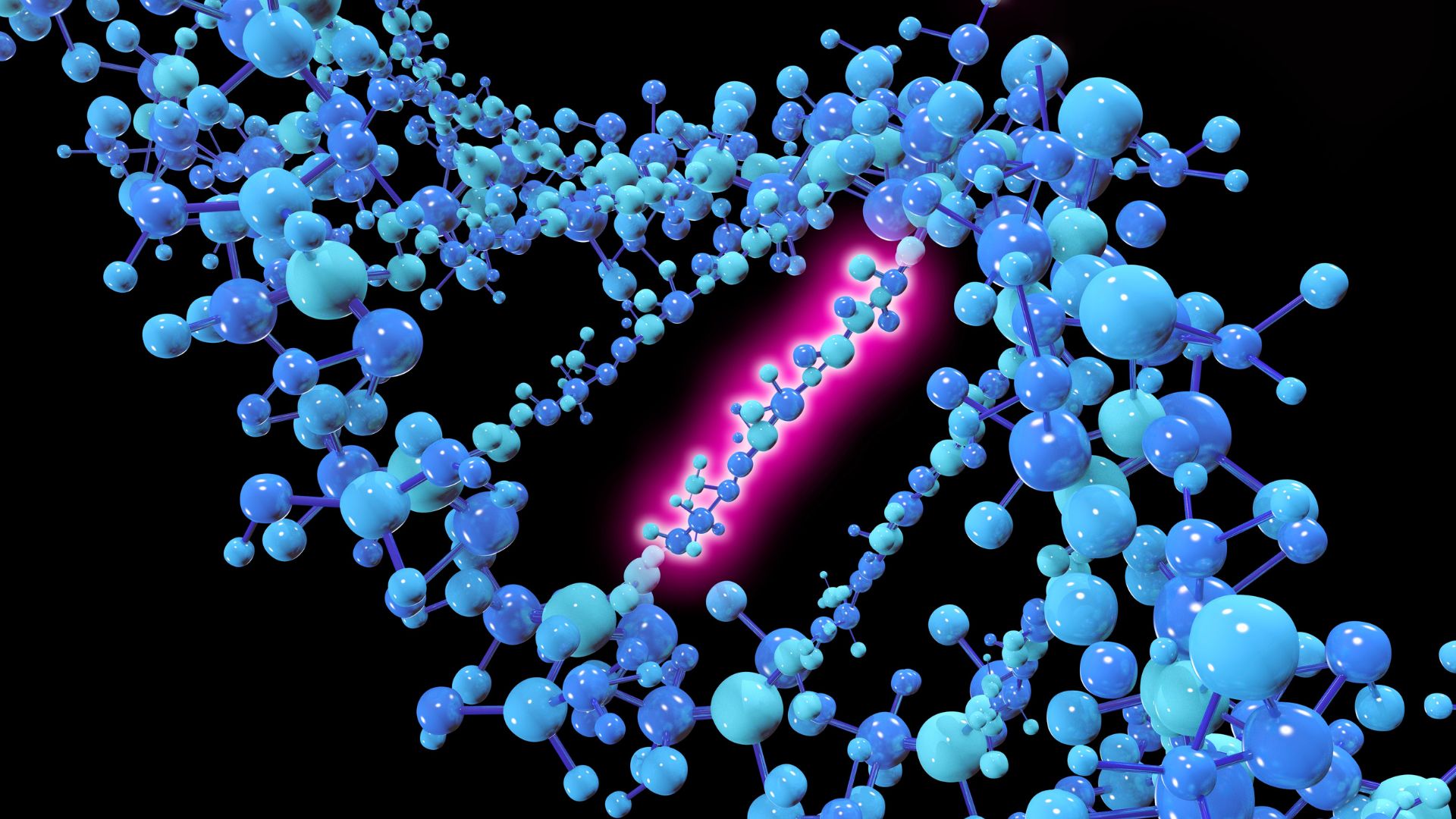Siblings rapidly lost their body fat in infancy due to rare, newly described gene mutation
Doctors found a novel gene mutation in two siblings with the same rare disorder.

In their first few months of life, two siblings rapidly lost most of their body fat. Now, doctors have found the cause: a DNA mutation never previously linked to their underlying disease.
According to a report of the cases, published July 12 in the journal Frontiers in Endocrinology, the siblings have a previously described condition called congenital generalized lipodystrophy (CGL), also known as Berardinelli-Seip syndrome, after doctors who first described the disorder. The disease has several subtypes that are collectively thought to affect 1 in 10 million people worldwide, according to MedlinePlus, an information service from the U.S. National Library of Medicine.
People with CGL are either born with nearly no fat or lose most of their fat shortly after birth. Due to how the brain regulates body weight and food intake, this lack of fat often comes with a voracious appetite and cravings for high-fat, high-sugar foods. This was true for the older brother, age 5, and younger sister, age 2, from Romania who were described in the recent report.
To inherit the disorder, children must get one copy of a dysfunctional gene from each parent; the exact gene varies depending on the subtype. Infants with the disorder appear very muscular and veiny due to their general lack of fat and the fact that the little fat they retain tends to build up in their muscles. Fat also builds up in the liver, causing enlargement and eventual damage.
Related: Doctors identify never-before-seen genetic mutations that led to 2 children's insatiable hunger
Treatment of CGL varies depending on the subtype and symptoms. People with the disease can survive to adulthood but face a risk of early death, often from complications of diabetes or from liver or heart disease.
Each kind of CGL comes with a unique genetic cause and associated symptoms, and the siblings were found to have a particularly rare subtype known as type 4.
Get the world’s most fascinating discoveries delivered straight to your inbox.
"To date, about 30 patients with congenital generalized lipodystrophy type 4 (CGL4) have been described," the case report authors wrote.
First described in 2009, CGL4 involves a gene found on chromosome 17 that codes for cavin-1, a protein that's found in cells throughout the body but is particularly important for fat. Cavin-1 helps to form and stabilize small pouches found in cells' outer membranes; these pouches appear in abundance in fat cells and are key for fat transport, processing and storage.
The inability to store fat inside fat cells leads to the buildup of fat droplets elsewhere in the body, including in the muscles, liver and bloodstream. CGL4 can also cause the heart muscle to thicken, leading to an irregular heartbeat, cardiac arrest and sometimes sudden death. The subtype is also linked to the thickening of the muscle between the stomach and the intestine, which can lead to severe vomiting.
The older sibling was hospitalized for such vomiting and underwent surgery to correct the narrowing of his stomach muscle. The younger sibling experienced cardiac arrest and an irregular heartbeat, both of which were successfully treated. Both siblings showed somewhat high levels of fat in their blood and slightly impaired liver function.
Fifteen other mutations of the Cavin-1-encoding gene have previously been observed in people with CGL4 and published to the Human Gene Mutation Database, a database of genes involved in inherited human diseases. The newly described mutation likely prevents cells from building a full-size version of Cavin-1, thus making the protein nonfunctional, the case report authors concluded.
Each sibling carried two copies of this newfound mutation, while each parent carried just one.
"CGL4 in Europe is extremely rare, and only two other cases have been described so far, while the majority of patients come from families of Omani, Japanese, Hispanic, Moroccan, and Turkish origin," the case report authors noted. "Most patients from these countries, described so far, have identical point mutations, suggesting that they have all the same origin, while in Europe, the genetic etiology [cause] of CGL4 previously reported is more complex due to a variability in patients with different ethnic backgrounds, and the presence of immigrant families [from] different parts of the world."
The children's health continues to be closely monitored as their doctors gather more data on their extremely rare condition.

Nicoletta Lanese is the health channel editor at Live Science and was previously a news editor and staff writer at the site. She holds a graduate certificate in science communication from UC Santa Cruz and degrees in neuroscience and dance from the University of Florida. Her work has appeared in The Scientist, Science News, the Mercury News, Mongabay and Stanford Medicine Magazine, among other outlets. Based in NYC, she also remains heavily involved in dance and performs in local choreographers' work.


